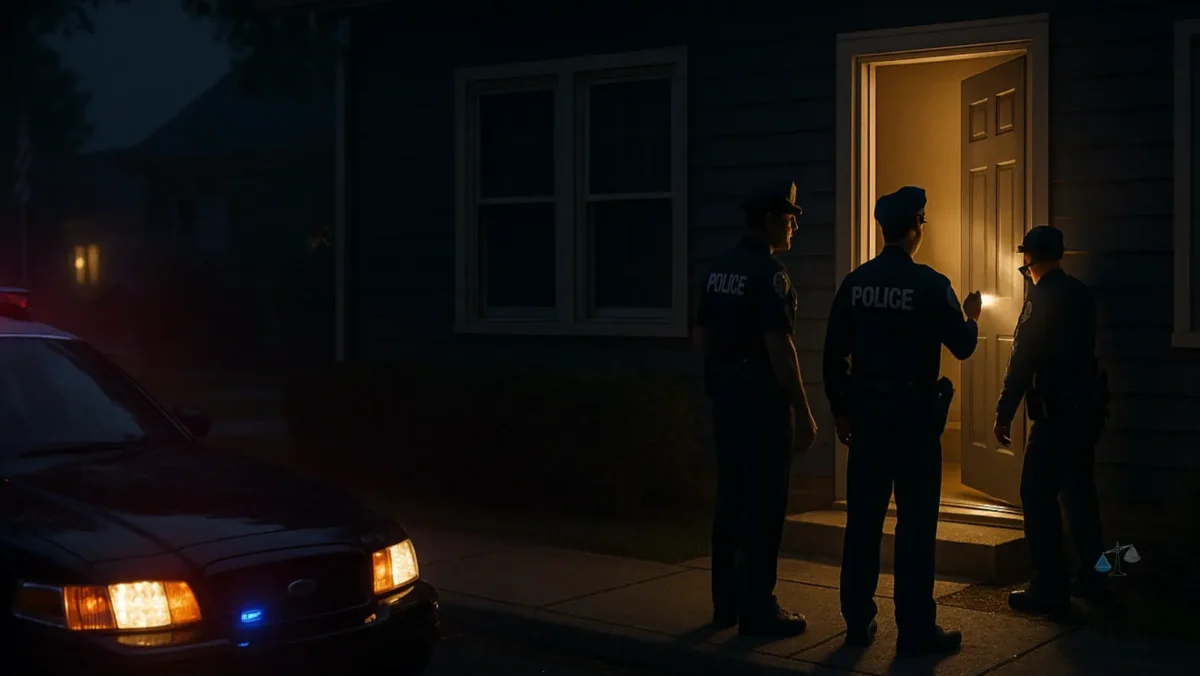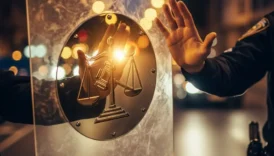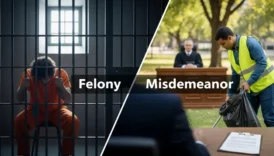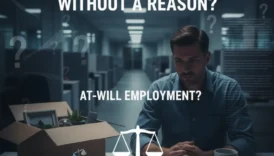When Can Police Enter Without a Warrant?

- When Can Police Enter Without a Warrant?
- What Is a Warrantless Entry?
- The General Rule
- Legal Basis Under the Fourth Amendment
- Examples of Valid Warrantless Entries
- 1. Exigent Circumstances
- 2. Consent
- 3. Hot Pursuit
- Community Caretaking and Public Safety Exceptions
- When It Applies
- Plain View Doctrine
- Search Incident to Arrest
- Why These Doctrines Exist
- Emergency Aid and Medical Response
- Key Elements
- Probation and Parole Searches
- Legal Basis
- Border and Checkpoint Exceptions
- Border Search Doctrine
- Fixed Checkpoints
- Blurring the Lines Between Safety and Surveillance
- Protective Sweeps and Officer Safety
- Legal Standard
- Scope Limits
- Administrative and Regulatory Inspections
- Limits of Administrative Entry
- Private Security and Joint Operations
- Key Principle
- Balancing Safety and Privacy in Noncriminal Contexts
- Consent Revisited: Third-Party and Apparent Authority
- 1. Third-Party Consent
- 2. Apparent Authority
- 3. Refusal and the Georgia v. Randolph Rule
- 4. Revoking Consent
- 5. Psychological and Coercive Factors
- 6. The Fine Line Between Cooperation and Coercion
- Plain View and “Plain Smell” in Modern Policing
- Plain Smell Doctrine
- Digital Evidence and Technology-Driven Entry
- Key Distinctions
- Thermal Imaging and Smart Home Surveillance
- Modern Parallel
- Limits of Lawful Intrusion in the Digital Era
- Public Policy, Accountability, and the Future of Warrant Exceptions
- 1. Public Policy Considerations
- 2. Police Accountability and Judicial Oversight
- 3. Training and Ethical Standards
- 4. The Future: Redefining “Privacy” in a Connected Society
- 5. Key Takeaways
- Author Note
- FAQ — When Can Police Enter Without a Warrant?
- Can police ever enter my home without a warrant?
- What counts as exigent circumstances?
- Can police enter if someone gives them permission?
- Can police enter during “hot pursuit”?
- What if police believe someone inside is hurt or in danger?
- Are landlords or hotel managers allowed to let police in?
- Can the smell of drugs alone justify a warrantless entry?
- What happens if police enter illegally?
What Is a Warrantless Entry?
A warrantless entry occurs when law enforcement officers enter a private residence or property without first obtaining a search or arrest warrant issued by a judge.
Under the Fourth Amendment to the U.S. Constitution, individuals have the right to be secure in their homes against unreasonable searches and seizures.
However, this protection is not absolute — the law recognizes several exceptions that allow officers to act without prior judicial approval.
In essence, warrantless entry represents a legal balancing act: the government’s duty to protect public safety versus an individual’s constitutional right to privacy.
Courts carefully analyze each case, weighing urgency, intent, and probable cause to determine whether the officer’s actions were justified.
The General Rule
The general rule is clear:
Police need a valid warrant to enter your home.
Without one, any evidence obtained may be deemed inadmissible under the exclusionary rule, meaning it cannot be used in court.
Yet, the Supreme Court has long recognized that strict adherence to the warrant requirement is not always practical.
Emergencies, risks to life, and certain voluntary interactions can legally bypass the warrant threshold — but these exceptions are narrow and scrutinized closely.
Legal Basis Under the Fourth Amendment
“The right of the people to be secure in their persons, houses, papers, and effects, against unreasonable searches and seizures, shall not be violated…”
This foundational text anchors all modern search-and-seizure law.
In Payton v. New York (1980), the Supreme Court held that entering a home without a warrant or consent generally violates the Fourth Amendment — unless an exception applies.
Key Legal Concepts:
- Probable Cause: Officers must have reasonable grounds to believe that a crime has been committed or is occurring.
- Reasonableness Standard: The court assesses whether the entry was objectively justified under the circumstances.
- Burden of Proof: The government carries the burden to prove the legality of a warrantless intrusion.
Courts evaluate each warrantless entry case individually, analyzing facts like timing, intent, location, and immediacy of threat.
Thus, while the rule is constitutional, the application is profoundly situational.
Examples of Valid Warrantless Entries
Not all warrantless entries violate the Fourth Amendment.
Several established doctrines allow law enforcement officers to enter private property without judicial authorization.
Below are the most recognized exceptions, supported by real case law examples.
1. Exigent Circumstances
If police reasonably believe that immediate action is necessary to prevent harm, destruction of evidence, or escape of a suspect, they may enter without a warrant.
Typical Scenarios:
- Hearing screams or gunshots inside a home.
- Belief that evidence (like drugs) is being destroyed.
- Hot pursuit of a fleeing suspect.
Case Example:
In Kentucky v. King (2011), officers smelled marijuana and heard evidence being destroyed inside an apartment.
The Supreme Court ruled the entry lawful under exigent circumstances because delay risked loss of evidence.
2. Consent
Police may enter if a person with legal authority voluntarily grants permission.
Consent must be freely given — not coerced or obtained through deception.
If valid consent exists, no warrant is necessary.
| Valid Consent Example | Invalid Consent Example |
|---|---|
| A homeowner invites officers in to discuss a disturbance. | Officers threaten arrest unless they enter. |
Case Example:
In Schneckloth v. Bustamonte (1973), the Court emphasized that consent is valid only when voluntary, judged by the totality of circumstances.
3. Hot Pursuit
When police chase a fleeing suspect into a private space, they may enter without a warrant to prevent escape or harm.
This doctrine prevents suspects from using property boundaries as shields against lawful arrest.
Case Example:
In United States v. Santana (1976), police pursued a woman who retreated into her house after a drug sale.
The Court upheld entry under the hot pursuit doctrine.
Community Caretaking and Public Safety Exceptions
While most warrantless entries are tied to criminal investigations, some occur under the broader duty of community caretaking — a concept that recognizes police officers as protectors of life, not just enforcers of law.
Under this doctrine, entry without a warrant is lawful when the primary motive is to ensure safety or provide aid, not to gather evidence.
When It Applies
Police may enter a home without a warrant if they reasonably believe someone inside is in danger or in need of emergency assistance.
The focus is humanitarian, not investigative.
Example Scenarios:
- A neighbor reports an elderly resident has not been seen for days.
- A child is heard crying alone for hours.
- Officers respond to a wellness check call where there’s a medical emergency.
Case Example:
In Brigham City v. Stuart (2006), officers entered a home after witnessing a violent fight through a window.
The Supreme Court held the entry justified — preventing harm outweighed the warrant requirement.
Plain View Doctrine
The plain view doctrine allows officers to seize evidence or contraband visible in plain sight during lawful presence, even without a warrant.
This rule, however, only applies when three strict conditions are met:
| Condition | Requirement |
|---|---|
| Lawful Access | The officer must be legally present at the location. |
| Immediately Apparent Illegality | The object’s incriminating nature must be obvious. |
| Lawful Right of Access | The officer must be entitled to physically reach or retrieve the item. |
Example:
An officer enters a home with valid consent to discuss a noise complaint and sees illegal firearms on the table.
Since the officer was lawfully present and the illegality was apparent, seizure is lawful under the plain view doctrine.
Case Example:
In Horton v. California (1990), the Supreme Court ruled that discovery need not be “inadvertent” — as long as the officer’s view was legal, the evidence could be seized.
“Plain view is not a loophole — it’s a boundary check on lawful observation.”
Search Incident to Arrest
When officers make a lawful arrest, they are permitted to search the arrestee and the immediate surroundings for weapons or evidence that might be destroyed.
This rule ensures safety and evidence preservation during the critical moment of detention.
Key Principles:
- The search must be spatially limited to the area within the arrestee’s immediate control.
- The entry itself must be lawfully grounded — either through arrest warrant, probable cause, or another valid exception.
Case Example:
In Chimel v. California (1969), officers searched an entire house incident to arrest.
The Court held the search unconstitutional beyond the suspect’s reach zone, defining strict limits still applied today.
Extended Doctrine:
In Maryland v. Buie (1990), the Court added that officers may conduct a quick protective sweep of nearby spaces if they reasonably suspect a hidden threat.
Why These Doctrines Exist
All these exceptions share a common purpose:
to ensure that law enforcement can act when waiting for a warrant would cause harm or destruction.
They are not blanket permissions but narrowly tailored doctrines guided by necessity, reasonableness, and oversight.
Without these exceptions, officers would be forced to choose between inaction and constitutional violation — a dilemma that could endanger both the public and themselves.
Emergency Aid and Medical Response
The emergency aid exception is one of the most universally accepted justifications for warrantless entry.
It permits officers to enter private property without judicial authorization when there is a reasonable belief that someone inside needs immediate assistance to prevent serious injury or death.
Key Elements
To qualify under this doctrine, three conditions must exist:
- Immediate Threat: A person’s life or health is at risk.
- Objective Reasonableness: The officer’s belief must be grounded in observable facts (e.g., screams, medical distress).
- Primary Intent: The purpose must be to render aid, not to investigate or collect evidence.
Example Scenario:
Paramedics request police assistance to enter a locked apartment where a caller reported a drug overdose.
Officers break the door, find the individual unconscious, and later seize narcotics in plain view.
The entry is valid — the evidence admissible — because the officers acted to save a life.
Case Example:
In Michigan v. Fisher (2009), officers observed blood and broken glass inside a house and entered to help an injured man.
The Supreme Court ruled that the emergency justified the warrantless entry.
Probation and Parole Searches
Probationers and parolees occupy a reduced zone of privacy because they remain under state supervision.
Courts have consistently ruled that officers may enter their homes or search their property without a traditional warrant if the search aligns with the conditions of release.
Legal Basis
- Probation: In United States v. Knights (2001), the Court held that searches based on reasonable suspicion were lawful if the probation conditions permitted it.
- Parole: In Samson v. California (2006), parolees could be searched without suspicion, given their diminished expectation of privacy.
| Status | Search Standard | Example |
|---|---|---|
| Probationer | Reasonable Suspicion | Officer suspects new criminal activity or violation. |
| Parolee | No Suspicion Required | Random check to ensure compliance. |
Policy Rationale:
The government’s interest in rehabilitation, deterrence, and community safety outweighs the full privacy rights of those still serving sentences outside prison walls.
“Freedom under supervision is a privilege, not a constitutional reset.”
Border and Checkpoint Exceptions
At the nation’s borders — and certain interior checkpoints — the balance between privacy and national security shifts dramatically.
Here, the government’s sovereign right to control entry and exit grants officers broader powers than those inside domestic settings.
Border Search Doctrine
Customs and Border Protection (CBP) officers may:
- Search vehicles, luggage, and even electronic devices,
- Without probable cause or a warrant,
- To enforce immigration and customs laws.
Case Example:
In United States v. Ramsey (1977), the Court upheld mail inspection at the border, affirming that national sovereignty justifies warrantless searches at entry points.
Fixed Checkpoints
Interior checkpoints — typically for immigration or DUI enforcement — allow limited questioning and visual inspection.
However, prolonged detention or intrusive searches still require probable cause.
Key Rule:
Routine stops are constitutional if their primary purpose is regulatory, not criminal investigation.
Blurring the Lines Between Safety and Surveillance
Each of these exceptions — medical emergencies, probation checks, and border controls — reflects a different form of state interest overriding total privacy.
Yet they all raise a similar concern: when does a safety motive become an excuse for surveillance?
Courts continue to emphasize reasonableness and scope as guiding limits.
If the government’s intrusion strays beyond its initial purpose, any evidence obtained may still be suppressed.
Protective Sweeps and Officer Safety
A protective sweep is a quick, limited search of a home or building conducted to ensure no hidden threats remain after or during an arrest.
This exception exists primarily to protect the lives of officers and others at the scene — not to collect evidence.
Legal Standard
The sweep must be:
- Brief and Targeted: Limited to spaces where a person could hide.
- Based on Reasonable Suspicion: Officers must have articulable facts suggesting danger.
- Temporally Linked to Arrest: Conducted immediately before, during, or after a lawful arrest.
Case Example:
In Maryland v. Buie (1990), police arrested a suspect in his home and briefly checked adjoining rooms for accomplices.
The Supreme Court upheld the sweep, establishing that officer safety can justify such limited intrusions.
“The law does not require officers to risk their lives while waiting for a warrant.”
Scope Limits
Anything found outside the defined safety perimeter — such as in closed drawers or distant rooms — is beyond lawful scope and typically excluded in court.
Administrative and Regulatory Inspections
Not all warrantless entries occur in criminal contexts.
Certain regulated industries are subject to administrative inspections that, by their nature, do not require traditional warrants.
This principle recognizes the government’s interest in public safety and compliance within heavily regulated sectors.
Examples of Regulated Premises:
- Restaurants (health inspections)
- Firearms dealers (ATF compliance checks)
- Mining operations (OSHA safety inspections)
- Liquor stores and bars (licensing enforcement)
Case Example:
In New York v. Burger (1987), the Court upheld a warrantless inspection of an auto junkyard, reasoning that the business operated in a closely regulated industry where surprise inspections deter illegal conduct.
| Inspection Type | Warrant Requirement | Condition |
|---|---|---|
| Public Health / Safety | Not Required | Conducted under statutory authority. |
| General Business Search | Required | Unless statute provides specific exception. |
Limits of Administrative Entry
- Must pursue a legitimate regulatory purpose, not criminal investigation.
- Must occur during reasonable hours and be minimally intrusive.
- Evidence found incidentally may be admissible only if officers were lawfully present under the regulatory purpose.
Private Security and Joint Operations
Modern law enforcement increasingly collaborates with private security personnel, raising questions about when private searches trigger constitutional protections.
The Fourth Amendment restricts government actors, not private citizens — but the boundary blurs when cooperation exists.
Key Principle
If private individuals act independently, their searches are not bound by the Fourth Amendment.
However, if they act at the direction of or in coordination with law enforcement, their conduct may be treated as a governmental search.
Example Scenarios:
- A hotel security officer finds drugs during room cleaning and reports it to police → Admissible (private discovery).
- A store guard searches a suspect’s bag at an officer’s request → Requires warrant or exception.
Case Example:
In United States v. Jacobsen (1984), FedEx employees opened a damaged package, found white powder, and notified DEA agents.
The Court ruled that the police could replicate the private search because it did not exceed the initial discovery’s scope.
“Private action becomes state action only when the hand of government guides it.”
Balancing Safety and Privacy in Noncriminal Contexts
These lesser-known exceptions demonstrate that warrantless entry is not always synonymous with criminal suspicion.
Whether to ensure safety, compliance, or cooperation, the legitimacy of the entry depends on purpose, scope, and proportionality.
Courts repeatedly emphasize that reasonableness — not mere government convenience — defines constitutionality.
Consent Revisited: Third-Party and Apparent Authority
The concept of consent in warrantless entry seems simple at first glance — if someone allows police to enter, the entry is lawful.
However, in practice, consent-based entries often hinge on who gave permission and whether they had legal authority to do so.
1. Third-Party Consent
A third-party consent occurs when someone other than the suspect authorizes the police to enter or search.
Under United States v. Matlock (1974), third-party consent is valid if that person has common authority — meaning mutual use or shared control over the premises.
Example:
A roommate can consent to a search of the shared living room but not another roommate’s locked bedroom.
Likewise, a landlord or hotel manager cannot consent to a search of a tenant’s or guest’s private room.
| Can This Person Consent? | Legally Valid? | Reason |
|---|---|---|
| Co-tenant or roommate (shared areas) | ✅ Yes | Common authority. |
| Guest or visitor | ❌ No | No control or ownership rights. |
| Landlord or hotel staff | ❌ No | Privacy belongs to occupant. |
2. Apparent Authority
Sometimes officers rely on reasonable belief that the consenting individual has authority — even if later proven wrong.
In Illinois v. Rodriguez (1990), police entered a man’s apartment based on his ex-girlfriend’s consent.
Though she no longer lived there, the Court ruled the entry lawful because officers reasonably believed she had authority.
This doctrine protects good-faith actions but is not limitless.
If officers ignore clear signs that the person lacks authority — for instance, if they admit they don’t live there — the entry becomes unconstitutional.
“Reasonable mistake may excuse error, but willful blindness never does.”
3. Refusal and the Georgia v. Randolph Rule
If one resident consents but another present resident objects, the police cannot lawfully enter.
This principle was established in Georgia v. Randolph (2006), where the Supreme Court held that a physically present occupant’s refusal overrides another’s consent.
Example Scenario:
Police knock on a couple’s door. The wife allows them in, but the husband says, “No, you can’t come in.”
Any entry at that moment is unlawful, even if the officers later obtain consent from only one party.
However, if the objecting resident is lawfully removed or absent (e.g., under arrest or not home), consent from the remaining occupant may suffice — as clarified in Fernandez v. California (2014).
4. Revoking Consent
Even valid consent can be withdrawn at any time.
Once the occupant says “stop” or asks officers to leave, further entry or search becomes illegal unless another exception applies.
Officers must cease immediately — continuing would convert lawful access into a Fourth Amendment violation.
Example:
A homeowner allows officers inside to discuss a complaint but later asks them to leave.
If the officers continue searching after revocation, any discovered evidence will likely be suppressed in court.
5. Psychological and Coercive Factors
Consent is only legitimate if given freely and voluntarily.
Courts analyze psychological pressure, tone, number of officers, and surrounding environment to determine whether consent was coerced.
Threats of arrest, aggressive questioning, or deceptive tactics invalidate consent.
Key Case:
In Bumper v. North Carolina (1968), police claimed they had a warrant when they did not.
The homeowner’s “consent” was deemed involuntary — the search unconstitutional.
6. The Fine Line Between Cooperation and Coercion
Consent-based entries are among the most litigated and misunderstood exceptions in Fourth Amendment law.
The legal standard remains consistent:
Consent must be informed, voluntary, and revocable — not the product of fear or misunderstanding.
Modern courts expect officers to document consent clearly, often through body cameras or signed consent forms, to avoid ambiguity.
Plain View and “Plain Smell” in Modern Policing
The plain view doctrine has long allowed officers to seize evidence visible from a lawful vantage point.
Over time, courts extended the same logic to other senses — particularly smell — under what is informally called the “plain smell” doctrine.
Plain Smell Doctrine
When an officer lawfully present detects the odor of contraband, such as marijuana or chemicals used to make narcotics, that sensory perception alone can establish probable cause to enter or search without a warrant.
Example Scenarios:
- Officers legally stop a vehicle and smell burnt marijuana → grounds for a search.
- Police respond to a noise complaint, smell chemical solvents consistent with meth production → exigent entry justified.
Case Example:
In United States v. Johns (1985), the Court affirmed that smell detection by trained officers can justify warrantless searches if linked to probable cause.
“What the eyes may lawfully see, the nose may lawfully confirm.”
However, as states increasingly legalize or decriminalize marijuana, many courts now reassess “plain smell” credibility, requiring additional evidence to justify entry.
Digital Evidence and Technology-Driven Entry
In the digital age, information itself has a physical home — smartphones, laptops, cloud accounts — all often within private residences.
This has complicated the traditional concept of entry, as accessing a digital device may constitute a constructive search even without physical intrusion.
Key Distinctions
- Physical Entry: Crossing the threshold of a home or building.
- Constructive Entry: Gaining access to private data (e.g., remote phone search) without stepping inside.
Landmark Case:
In Riley v. California (2014), the Supreme Court held that digital devices require warrants, even when seized lawfully, because of the massive privacy implications tied to personal data.
Modern Challenges:
- Officers may use smart-home devices (like Alexa or Ring cameras) as investigative tools.
- Digital warrants must specify not only what can be accessed but also how far data retrieval can extend.
“The home’s new front door may be digital — but the Constitution still knocks first.”
Thermal Imaging and Smart Home Surveillance
Technology like thermal scanners, drones, and smart sensors has redefined what it means to “enter” a space.
In Kyllo v. United States (2001), the Court ruled that using a thermal imaging device to detect heat patterns from a home constituted a search requiring a warrant.
The reasoning: Such tools allow access to details otherwise unknowable without physical intrusion.
Modern Parallel
- Smart doorbells and surveillance apps may transmit live interior views.
- Law enforcement agencies partnering with tech companies (e.g., through community camera programs) blur traditional entry lines.
Legal Principle:
If technology gives officers information equivalent to entering a home, a warrant is still required unless a clear exception applies.
Limits of Lawful Intrusion in the Digital Era
Courts today face an evolving question: When does observation become intrusion?
As technology bridges private and public spaces, the law adapts by reinforcing reasonable expectation of privacy as the constitutional anchor.
| Type of Intrusion | Warrant Requirement | Legal Status |
|---|---|---|
| Visible evidence from a lawful position | No | Plain View |
| Odor indicating illegal activity | Often No | Plain Smell (limited by state law) |
| Remote access to phone or cloud data | Yes | Requires Warrant |
| Use of drones or thermal devices | Yes | Requires Warrant |
Ultimately, digital-era policing must balance innovation with restraint.
Courts continue to reaffirm that the Fourth Amendment protects people, not places — meaning constitutional privacy extends wherever technology takes us.
Public Policy, Accountability, and the Future of Warrant Exceptions
The question of when police can enter without a warrant lies at the heart of American constitutional balance.
Every exception — from exigent circumstances to digital searches — represents a point on the scale between public safety and personal liberty.
Courts and legislatures continually refine these doctrines, shaping the future of privacy in a world where the meaning of “home” itself keeps changing.
1. Public Policy Considerations
Public policy must address two competing values:
- The government’s obligation to protect citizens from harm, and
- The individual’s right to be secure against intrusion.
As terrorism, school shootings, and cyber threats evolve, pressure mounts for broader police authority.
Yet history warns that unchecked power risks eroding the very freedoms it seeks to preserve.
The Fourth Amendment’s endurance lies not in rigidity, but in reasoned flexibility — adapting to modern threats while honoring foundational liberty.
“The Constitution is not a barrier against protection, but a boundary that ensures it remains lawful.”
2. Police Accountability and Judicial Oversight
To prevent abuse, courts demand transparency and justification for every warrantless entry.
Mechanisms ensuring accountability include:
- Body-worn cameras, documenting officer behavior in real time.
- After-action reports, detailing probable cause and exigent rationale.
- Judicial review, where evidence obtained without proper grounds may be excluded.
Modern oversight systems are not adversarial to policing; they protect its legitimacy.
Each lawful exception must remain narrowly applied, carefully reviewed, and publicly defensible.
3. Training and Ethical Standards
Police academies increasingly emphasize constitutional literacy and ethical restraint as central to professional conduct.
Officers are trained to:
- Evaluate the necessity of immediate entry,
- Distinguish between emergency aid and investigatory motive,
- Respect verbal revocations of consent, and
- Use minimal force consistent with purpose.
Ethical policing depends on judgment — the ability to say “I can, but I shouldn’t.”
4. The Future: Redefining “Privacy” in a Connected Society
As artificial intelligence, smart homes, and ubiquitous surveillance redefine what privacy means, the next frontier of Fourth Amendment law will revolve around data boundaries.
Future courts will likely grapple with:
- Whether a home’s digital infrastructure (IoT devices, biometric locks) constitutes part of the “curtilage.”
- How predictive algorithms that flag homes for police visits fit within constitutional frameworks.
- Who owns “ambient data” continuously shared with third-party services.
The doctrine of warrantless entry may soon expand from physical intrusion to algorithmic presence — a realm the Framers never imagined, yet where their principles still apply.
5. Key Takeaways
- General Rule: Police need a warrant to enter a home.
- Recognized Exceptions: Exigent circumstances, consent, hot pursuit, community caretaking, plain view/smell, search incident to arrest, probation/parole, and border enforcement.
- Core Principle: All exceptions hinge on reasonableness and necessity, not convenience.
- Digital Context: Modern technology introduces new forms of “entry” requiring judicial oversight.
- Public Accountability: Every intrusion must be traceable, justified, and subject to review.
“The true strength of the Fourth Amendment is not that it forbids power — but that it forces power to answer for itself.”
Author Note
This article was written to clarify the complex circumstances under which law enforcement officers may enter a home or property without a warrant.
Its purpose is to educate readers, students, and legal professionals about the delicate balance between constitutional privacy and public safety.
All examples and case summaries are for informational purposes only and should not be interpreted as legal advice.
Individuals facing search or seizure issues should consult a qualified attorney for guidance specific to their jurisdiction.
FAQ — When Can Police Enter Without a Warrant?
Can police ever enter my home without a warrant?
Yes. Police can enter without a warrant only under specific, legally recognized exceptions such as exigent circumstances, consent, hot pursuit, or emergency aid.
Each exception requires objective justification and must be based on immediate need — not convenience or suspicion alone.
What counts as exigent circumstances?
Exigent circumstances arise when waiting for a warrant would endanger life, risk the destruction of evidence, or allow a suspect to escape.
For example, hearing gunshots or seeing smoke inside a home could justify immediate entry to protect lives or preserve evidence.
Can police enter if someone gives them permission?
Yes, if consent is freely and voluntarily given by someone with legal authority over the premises.
However, if the person is coerced or misled — or if another resident present refuses — entry becomes unlawful under the Georgia v. Randolph rule.
Can police enter during “hot pursuit”?
Yes. When officers chase a fleeing suspect who enters private property, they can legally follow without a warrant.
The hot pursuit doctrine prevents suspects from using their home as a refuge against lawful arrest.
What if police believe someone inside is hurt or in danger?
In such emergencies, officers may enter without a warrant under the emergency aid exception.
Their purpose must be to render medical or life-saving assistance — not to conduct a criminal investigation or collect evidence.
Are landlords or hotel managers allowed to let police in?
No. Landlords, hotel staff, or property managers cannot consent to a search of a tenant’s or guest’s private space. Only the occupant or a person with shared control (like a roommate) may give valid consent.
Can the smell of drugs alone justify a warrantless entry?
In some cases, yes — the plain smell doctrine allows officers to act if they detect an odor strongly associated with illegal activity. However, with marijuana legalization in many states, courts increasingly require additional evidence beyond smell to establish probable cause.
What happens if police enter illegally?
If officers enter without a valid warrant or recognized exception, any evidence they collect is typically suppressed under the exclusionary rule. This means it cannot be used in court, and related charges may be dismissed.
Unlawful entry can also expose the department to civil liability.
“Knowing your Fourth Amendment rights means knowing when the police can — and cannot — step through your door.”






